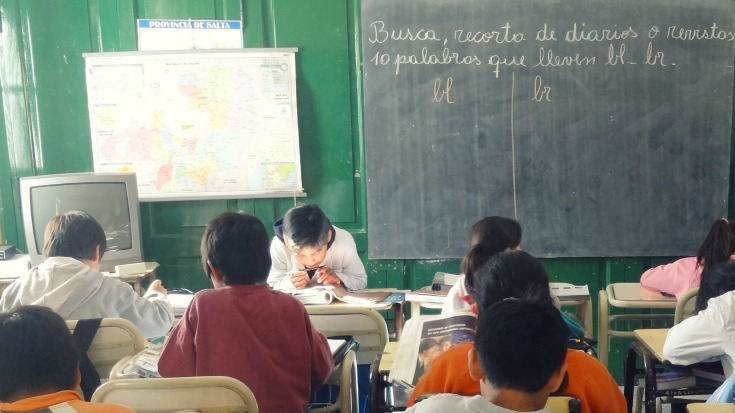Challenge
In 2005, as Argentina was recovering from the social and economic crisis that had begun in 1998, the government began to shift its focus from crisis response to addressing long-term structural issues. One focus was the educational system available to the rural populations in the rural Northwestern and Northeastern provinces. In rural areas, the educational system suffered from pockets of limited coverage with incomplete access to the ten obligatory years of education. The quality of education was significantly lower than that of urban areas, with high repetition and dropout rates. Moreover, because they were located in areas of low population, rural schools tended to be low priority in terms of the allocation of resources. To that end, the main provision of the 2006 National Education Law included (i) the recognition of the rural modality in education policy, (ii) the extension of compulsory education to 12 years, (iii) promotion of quality at all levels, and (iv) increased participation in preschool, particularly in low-income areas. These provision sought to guarantee equal opportunities by improving the educational attainment of the rural populations in the Northwest and Northeast.
The government’s National Rural Education Program was designed to address the requirements of the education system in rural areas and support coverage of the 10-year compulsory education, while improving the quality of basic education.
Solution
The Argentina Rural Education Improvement Project was instrumental in creating a national policy for rural education. The project objectives reflected the provisions of the2006 education law. The project’s design included the lessons learned from previous projects in Argentina and best practices from other countries and focused particularly on the pre-school and primary levels, because they determine a child’s future. The project provided textbooks, learning materials, teacher training and clusters of rural schools, upgraded buildings and classrooms, and the extension of schooling in the lower secondary levels.
Results
- Coverage: Preschool enrollment between 2004 and 2013 in rural areas (excluding Buenos Aires Province) increased 32.4 percent. The target of 85 percent for access from 7th to 8th was achieved in 2011 and 2012, while in 2013 the value was slightly below. Coverage improved significantly given that lower secondary enrollment increased 30.8 percent between 2004 and 2013 in rural schools (excluding Buenos Aires Province). The project also contributed to increasing the access to lower secondary education (8th grade).
- Efficiency: The target for the promotion rate in primary education was exceeded. The project successfully contributed to a significant reduction of repetition and dropout in rural areas.
- Quality: About 4,696 teachers enrolled in a 400-hour training session, of which 2,735 graduated.
- Governance: The bilateral agreements, including the Provincial Rural Education Plan, were signed with all the Provinces, followed by the signing of the first annual covenants specifying activities, goals and indicators. Every year of Project implementation, a complementary Act was signed to update the bilateral agreements, followed by annual covenants to program activities.
- Institutional changes: contributed to consolidating accountability among participating Provinces by implementing bilateral agreements between the federal government and the Provinces and strengthening capacity in the Provinces.
Bank Group Contribution
A US$467,000 trust fund grant for technical assistance supported project preparation. The Bank supported the project with a US$150 million loan.
Moving Forward
The Bank is continuing to support the government’s national education policy with a new loan on rural education, Argentina Second Rural Education Improvement Project. The project will support the government’s policy of increasing access, quality, and relevance in secondary education in Argentina's rural areas.
Beneficiaries
The main beneficiaries of all these achievements were the estimated 868,540 students, ages 5 to 14, enrolled in Argentina’s rural schools.

